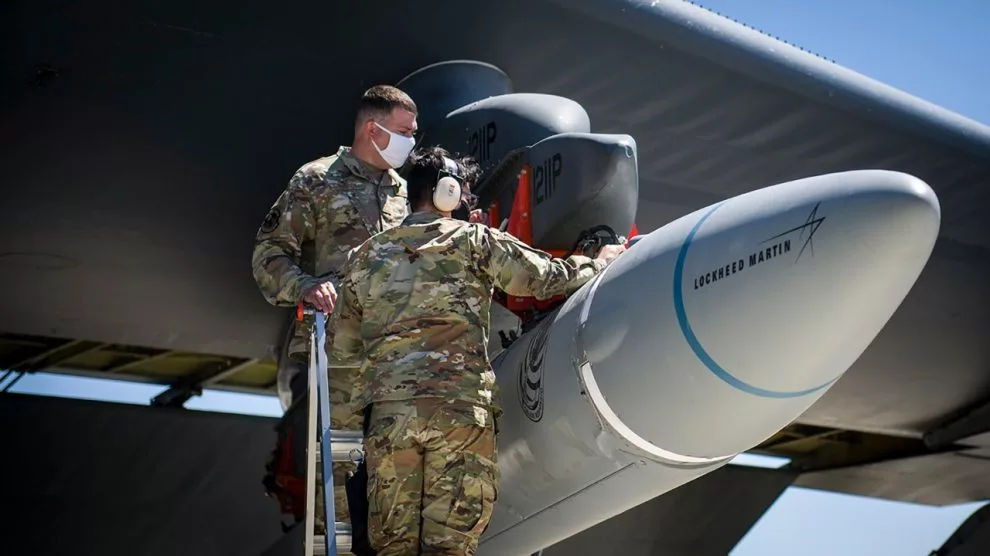Lockheed Martin and the US Air Force have completed the first flight test of a tactical version of the hypersonic AGM-183A Air-Launched Rapid Response Weapon (ARRW). Strapped beneath the wing of a B-52 Stratofortress bomber, the missile was carried into the skies over Edwards Air Force Base, California, on August 8, 2020, in a captive test where it was not released for free flight.
With their ability to pierce current air defense systems at speeds in excess of Mach 5 (3,709 mph, 5,440 km/h), hypersonic weapons are seen as one of, if not the game changers in 21st-century warfare. However, flying at five times the speed of sound requires overcoming many major technological hurdles through a series of careful steps rather than dramatic breakthroughs.
Capable of flying at speeds of up to Mach 20 (15,345 mph, 24,695 km/h), the AGM-183A is an unmanned glide-body hypersonic missile that is designed to be deployed from an aircraft before being boosted above Mach 5 by a rocket and then gliding to its target. Smaller than other candidate hypersonic weapons, it could be carried in greater numbers by a B-52 or even could be fitted to an F-15 fighter jet.

The missile previously flew in 2020 and Lockheed says that the one used in the recent test is the first tactical prototype to be assembled, which indicates that the program is moving beyond purely research work and towards an actual functioning weapons system. The purpose of the captive-carry flight was to test new tactical hardware and the vehicle was fully instrumented to gather thermal, mechanical, and digital data. Ground and flight testing is scheduled to continue for another two years.
No announcement was made as to exactly when free-flight tests will begin or when the AGM-183A or its operational successor will enter into service.
"The team overcame significant challenges driven by the COVID-19 pandemic to achieve this significant milestone for the program," says Dave Berganini, ARRW program director at Lockheed Martin Missiles and Fire Control. "This captive carry mission is the precursor for our first booster test flight planned for early 2020s."
Source: Lockheed Martin






